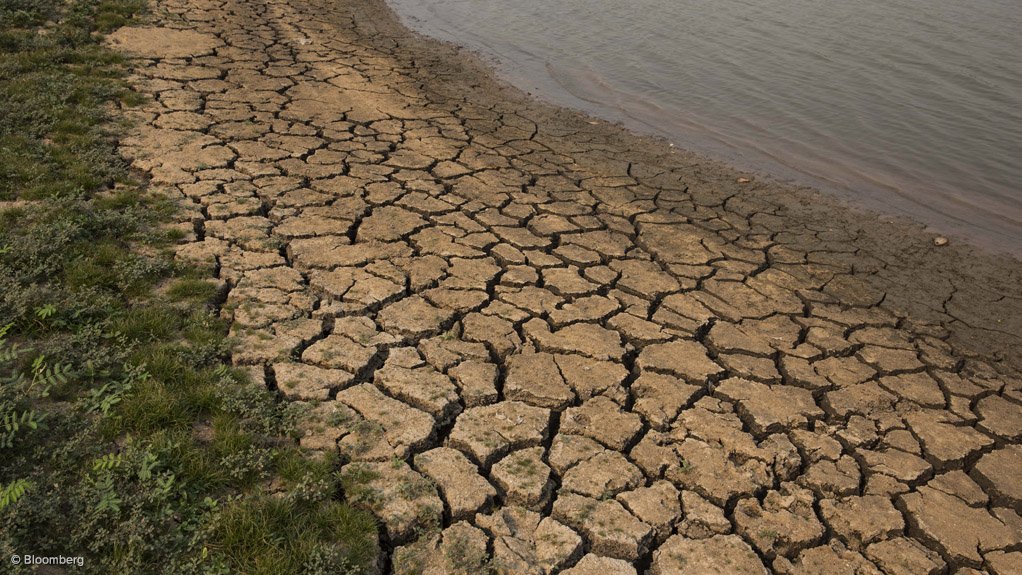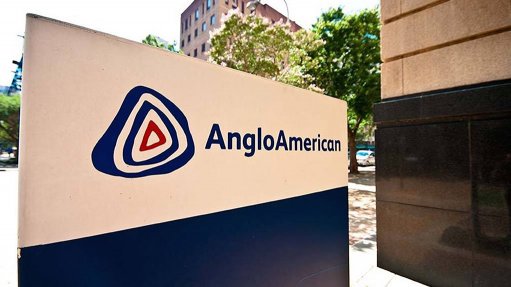Water-mining interdependence poses operational challenges, risks to miners
The water-mining interdependence, or nexus, poses several operational challenges to mining companies, including physical, reputational and regulatory-related risks and, as water-related risks continue to rise in the mining industry, it will become increasingly essential for companies to implement water risk management strategies and disclose water-related data.
Water is a fundamental input for the mining sector, and the mining process also significantly impacts water resources and can result in water depletion and contamination, impacting local communities and other industrial users, said industry research and market intelligence company BMI in its 'Navigating The Water Risk Landscape Top Priority For Mining Companies' report, published this week.
The risks will escalate over the coming years, as water scarcity rises and competition for resources intensifies, underpinned by factors such as urbanisation, industrialisation and climate change. Increasing demand and declining grades also require more ore to be processed, which requires additional water resources.
Further, the geographical location of a mine significantly influences its susceptibility to water risks. Numerous prominent mining regions worldwide, namely Middle East and North Africa, Central Asia and select markets in South America and Asia will be particularly exposed to water-related risks.
Water-related risks could have severe financial repercussions for mining companies and may disrupt their supply chains. According to a report by global environmental disclosure nonprofit Carbon Disclosure Project (CDP), the extractives sector suffered over $20-billion in water-related financial impacts in 2018.
"These challenges underscore the urgency for mining companies to prioritise comprehensive water risk management strategies and the adoption of sustainable pratices in order to minimise financial losses and supply chain disruptions," the report stated.
Environmental, social and governance issues, and specifically water management, have been cited as a key area of focus for the metals and mining sector and it receives the most scrutiny from investors, it added.
Mining operations heavily rely on water for various intensive activities, such as mineral separation from host rocks; cooling drilling and processing machinery; and dust suppression. Additionally, water is frequently employed for storing mining byproducts and facilitating downstream processing.
Therefore, access to a secure and stable water supply is critical for mining operations. Various organisations, such as the CDP, the World Resources Institute and Columbia University, are actively developing tools for assessing water risks, BMI added.
The International Council on Mining and Metals (ICMM) has launched a stewardship strategy, the ICMM Water Stewardship Framework, which offers practical guidance to the metals and mining industry centred on a catchment-based approach to water management. The four key elements of the strategy are: i) engagement with other water users, ii) transparent public reporting on water usage, material water risks and performance, iii) collaboration with other water users to mitigate shared water risks and support equitable access and iv) increased efficiencies in the use of water.
Regulatory, physical and reputational risks have widespread financial implications. The physical risk of water scarcity to mining companies includes the potential adverse impacts of limited access to water resources on their operations. Decreased water supply makes obtaining sufficient quantities for mining processes difficult, leading to increased costs in securing water sources, via technology such as desalination.
"Additionally, operational disruptions may occur owing to limited water availability, potentially causing production delays or shutdowns.
"The severe drought in Chile at the start of 2022 significantly impacted on mining operations in the country. Chile is the world’s largest copper producer and second-largest lithium producer."
Diversified miner Anglo American's Los Bronces mine, in central Chile, experienced a 17% year-on-year decrease in production, as reported in the first quarter of 2022 results, attributed partly to water scarcity. Similarly, Antofagasta Minerals reported a 24% drop in production during the same period at its Los Pelambres mine owing to the impact of drought, the report pointed out.
Meanwhile, limited water availability can lead to tensions with local communities as mining operations compete for access to water resources, causing social and reputational challenges. Mismanagement of water resources and resultant water pollution can exacerbate community conflicts and damage a company's reputation.
"Both these situations can lead to communities opposing mining projects, causing cancellations and temporary shutdowns of mines," BMI said.
In January 2022, traditional herders from Khanbogd, in Mongolia, staged a demonstration at the gates of the Oyu Tolgoi copper/gold mine, which is controlled by Rio Tinto. The protest resulted from the frustration caused by the failure to fulfil promises regarding livelihood support projects for herders who lost access to water and pastures and job opportunities, the report highlighted.
Further, mining companies will likely face increasing regulatory risks concerning water in the near-to-medium term. Governments worldwide are responding to public concerns about water shortages by introducing new laws to regulate water rights, use and management.
"Failure to comply with stricter regulations from policymakers could lead to financial penalties if companies cannot adapt to the new rules or regulatory restrictions placed on production processes. As environmental sustainability becomes a priority for corporate boards and governments worldwide, water sustainability regulations and net-zero commitments will pressure mining processes in the coming years," BMI noted.
For example, in response to growing concerns over water scarcity and environmental degradation, China has taken significant steps to improve water resource management.
Regulators have introduced stricter requirements and imposed mandatory limits on water use, efficiency and quality for various industries and sectors, including the mining industry. One of the key initiatives is the implementation of the Water Ten Plan, launched in 2015, which aims to enhance water quality, conservation and sustainable use.
AFRICA
Meanwhile, in 2020, diversified miner Glencore established an external group-level water target that all managed industrial assets located in water-stressed regions would finalise an assessment of their material water-related risks, set local targets and implement actions to reduce impacts and improve performance by the end of this year.
In South Africa, Glencore Ferroalloys’ industrial assets have undertaken a study to determine baseline water and ecosystems conditions of every catchment located next to Glencore's industrial sites. The study was conducted to provide a scientific basis and accurate data to develop catchment context-based local water targets for each industrial asset.
Each of Glencore Ferroalloys' industrial assets is reviewing its proposed catchment context-based local water targets. The targets will drive initiatives to improve the effectiveness and efficiency of water management practices at an industrial asset level, and to identify partnership opportunities to address catchment water-related issues, highlighted BMI.
Additionally, in the Democratic Republic of Congo, the Glencore Mutanda industrial asset is targeting increasing its supply of drinking water to local communities by 20% by 2024, against a 2020 baseline. This includes installing boreholes and associated equipment, such as pumps, tanks and pipes.
Mutanda has established a water committee to steer and monitor this project. The next steps involve a community groundwater modelling to identify the right locations for the required boreholes.
Comments
Press Office
Announcements
What's On
Subscribe to improve your user experience...
Option 1 (equivalent of R125 a month):
Receive a weekly copy of Creamer Media's Engineering News & Mining Weekly magazine
(print copy for those in South Africa and e-magazine for those outside of South Africa)
Receive daily email newsletters
Access to full search results
Access archive of magazine back copies
Access to Projects in Progress
Access to ONE Research Report of your choice in PDF format
Option 2 (equivalent of R375 a month):
All benefits from Option 1
PLUS
Access to Creamer Media's Research Channel Africa for ALL Research Reports, in PDF format, on various industrial and mining sectors
including Electricity; Water; Energy Transition; Hydrogen; Roads, Rail and Ports; Coal; Gold; Platinum; Battery Metals; etc.
Already a subscriber?
Forgotten your password?
Receive weekly copy of Creamer Media's Engineering News & Mining Weekly magazine (print copy for those in South Africa and e-magazine for those outside of South Africa)
➕
Recieve daily email newsletters
➕
Access to full search results
➕
Access archive of magazine back copies
➕
Access to Projects in Progress
➕
Access to ONE Research Report of your choice in PDF format
RESEARCH CHANNEL AFRICA
R4500 (equivalent of R375 a month)
SUBSCRIBEAll benefits from Option 1
➕
Access to Creamer Media's Research Channel Africa for ALL Research Reports on various industrial and mining sectors, in PDF format, including on:
Electricity
➕
Water
➕
Energy Transition
➕
Hydrogen
➕
Roads, Rail and Ports
➕
Coal
➕
Gold
➕
Platinum
➕
Battery Metals
➕
etc.
Receive all benefits from Option 1 or Option 2 delivered to numerous people at your company
➕
Multiple User names and Passwords for simultaneous log-ins
➕
Intranet integration access to all in your organisation





















